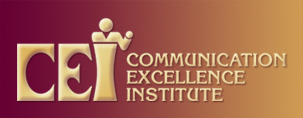The stage is set. You’re about to go on. You’ve labored over your PowerPoints. You’ve considered your audience’s need for information. In short, you’ve covered all the bases.
Now you step up before the group. You’re ready to go. You’re pumped! So you stand up and say,
“HiI’mJoeSmithandI’mdelightedtobeherewe’vegotalotofgroundtocoversolet’sgetstarted.”
You’ve heard this kind of introduction a million times. And it doesn’t stop at the introduction. The whole speech is one long “river of words.” Maybe you’re practicing a kind of “machine gun” delivery. If so, you’re probably leaving your audiences way behind.
What you need at this point is to master the fine art of pausing. In short, you need to TAKE YOUR TIME. A feature of highly effective presenters is that they measure out their words and sentences like phrases in a musical piece so that their hearers can absorb units or modules of thought.
You should “take a beat” in a number of situations.
Before you say a word
As you come on stage and quickly settle into your speaker’s stance, skillfully “finding your light,” stop, look out at the audience, and take 1-2 “beats” of silence before you open your mouth to speak. This gives your audience a chance to adjust to your presence and it gives you a moment to catch your breath.
Between sentences
If you look at the stream of text above, obviously the speaker should pause like this:
“Hi. <pause> I’m Joe Smith. <pause> I’m delighted to be here. <pause> We’ve got a lot of ground to cover. <pause> So let’s get started.”
If you take beats between sentences, you give a very different impression. Your audience can now get in step with you, your articulation will improve, and best of all, you’ll put yourself and your listeners more at ease. Running words and sentences together sends a semi-conscious message that I really want to finish up quickly and get the heck out of here!
Between words
We all know about putting extra stress on a word we want to stand out in our listener’s mind. We also know that by stressing different words in a sentence, we can significantly change the meaning of an idea. Consider this sentence:
Our client insists on great customer service.
Most people would probably accentuate it like this:
Our client INSISTS on GREAT customer service.
We can change the meaning somewhat by stressing different words:
OUR client (versus some else’s client) insists on great CUSTOMER service (as opposed to some other kind of service like technical support).
Now look what happens when we emphasize different words and add a couple of pauses in the first sentence above:
Our client <pause> INSISTS <pause> on <pause> GREAT <pause> customer service.
Looks like we have a client who REALLY values special treatment! The pause on either side of a word makes it stand out graphically and conveys a much stronger impact, a real benefit in the oral communication mode, which is notoriously unreliable for conveying information.
For dramatic effect
Jan frequently quotes one of her professors at Northwestern University who said that the truly outstanding speaker learns how to sculpt silence. Let me explain. Think of silence as a critical component of any talk. When you’re really wanting to dramatize something, you pause to signal your listeners that something important is coming. Think of how John Kennedy used silence in his famous inaugural address. He paused both between sentences and between words for dramatic effect.
ASK NOT <pause> what your COUNTRY can do for YOU; <pause> ASK <pause> what YOU can do for your COUNTRY.
This never-to-be-forgotten proclamation fueled a new generation with a new view of their role in the world and in politics.
One caveat – Keep your energy high throughout your pauses.
There is more than one way to pause. Speakers who are relatively disinterested in their subject and/or audience will exhibit low energy overall, but especially during pauses. They may drop eye contact, make feeble gestures, or sway or pace back and forth. Dynamic speakers, on the other hand, exhibit high energy throughout the pause: they hold their gestures firmly and maintain good eye contact during the entire pause.
The benefits of pausing
- You can relax more, knowing that pauses give you a moment to collect your next thought.
- Your listeners have more of a chance to absorb your key points.
- In introductions of yourself and others, pausing enhances positive feelings toward you and toward the person you’re introducing.
- You come across much more confident, sending the message that you know your listeners will follow you through those pauses (provided they’re conveyed with nonverbal energy).
- You are able to slow down and project better just because you’re taking in more air.
To convey your deep passion for your topic, learn to pause skillfully!
Yours in good communication,
Jan and Neal Palmer |



